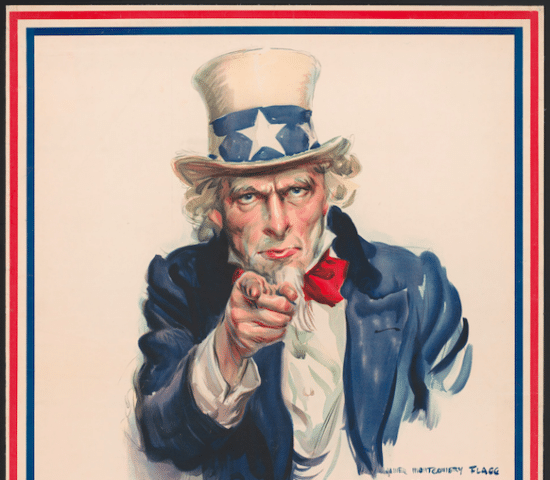
Easy Money, Hard Consequences: Analyst Warns of Looming Monetary System Collapse
Easy money policies signal instability: Analyst predicts monetary system breakdown
(Kitco News) – The return to ‘easy money’ policies via lower interest rates and stimulus injections has excited market watchers and juiced asset prices, but according to one analyst, these are but the latest signs that “The present monetary system is heading for a breakdown.”
“Many economists incorrectly assume a growing economy also requires a growing money stock, assuming that economic growth gives rise to a greater demand for money,” wrote Frank Shostak, an associate scholar at The Mises Institute. “It is held that failing to increase money to facilitate increased trade will lead to a decline in prices of goods and services, destabilizing the economy and leading to an economic downturn.”
“Some commentators believe that the lack of a flexible mechanism coordinating demand versus the money supply is the major reason why the gold standard leads to instability,” he added. “The idea is that, relative to the growing demand for money because of growing economies, the supply of gold does not grow fast enough. Thus, to prevent economic shocks from imbalances between the demand and the supply of money, the Fed must make sure that supply and demand are synchronized.”
But with this set-up, “whenever an increase in the demand for money occurs, the Fed must allegedly accommodate with fresh money in order to maintain economic stability,” Shostak noted.
Due to a focus on supply growth, he said that economists are “continuously searching for the ‘optimum’ growth rate in the money supply,” such as Milton Friedman's theory that, “if a fixed percentage of inflation (e.g., 3% per year) is maintained over a prolonged period, it will usher in an era of economic stability.”
“The whole idea that money must grow in order to sustain economic growth gives the impression that money sustains the economy,” Shostak said. “According to Rothbard,
‘Money, per se, cannot be consumed and cannot be used directly as a producers’ good in the productive process. Money per se is therefore unproductive; it is dead stock and produces nothing.’”
“Money neither sustains nor funds economic activity,” Shostak stressed. “The means of sustenance are savings, capital investment, and increased production of consumer goods. By fulfilling the role of the medium of exchange, money simply facilitates the flow of goods and services.”
Shostak highlighted the common misconception that “Individuals do not want a greater amount of money in their pockets, rather they want greater purchasing power.”
“In a free market, similar to other goods, the price of money is determined by supply and demand. All other things being equal, a decline in the supply of money causes an increase in the purchasing power of money (PPM),” he explained. “Conversely, purchasing power falls with an increase in the supply of money.”
“Within a free market, there is no such thing as ‘too little’ or ‘too much’ money,” Shostak said. “As long as the market is allowed to clear, no ‘shortage of money’ can emerge.”
To further underline his point, Shostak provided the following definition from Mises:
“As the operation of the market tends to determine the final state of money’s purchasing power at a height at which the supply of and the demand for money coincide, there can never be an excess or deficiency of money. Each individual and all individuals together always enjoy fully the advantages which they can derive from indirect exchange and the use of money, no matter whether the total quantity of money is great, or small.... the services which money renders can be neither improved nor repaired by changing the supply of money.... The quantity of money available in the whole economy is always sufficient to secure for everybody all that money does and can do.”
“Once the market has chosen a particular commodity as money, the given stock of this commodity is going to be sufficient to secure the services that money provides,” Shostak said. “Hence, in a free market, the whole idea of the optimum growth rate of money is absurd.”
He said that originally, “paper money was not regarded as money, but merely as a representative of gold (i.e., money-substitute).”
“Various paper certificates were claims on gold which was stored with the banks,” he explained. “Holders of paper certificates could convert them into gold whenever they deemed necessary. Because people found it more convenient to use paper certificates to exchange for goods and services, these certificates came to be regarded as money.”
While this system offered convenience, he noted that accepting paper certificates as the primary medium of exchange widened “the scope for fraudulent practice.”
“Banks could be tempted to boost their profits by lending certificates that were not covered by gold,” he said. “In a free market economy, a bank that over-issues certificates would quickly find out that the exchange value of its certificates, in terms of goods and services, will decline.”
In order to protect their purchasing power, those who hold the bank's unbacked certificates would then attempt to convert them back to gold, he said. “Were all of them to demand gold back at the same time, this would bankrupt the bank.”
“In a free market, then, the threat of bankruptcy would restrain banks from issuing paper certificates unbacked by gold,” Shostak said. “This means that in a free-market economy, paper money cannot assume a ‘life of its own’ and become independent of commodity money.”
“The government, however, can bypass the free-market discipline,” he highlighted. “It can issue a decree that makes it legal for banks not to redeem certificates into gold (i.e., suspend specie payments).”
Once this occurs, Shostak noted that “opportunities for large profits are generated with fewer consequences,” which “incentivizes banks to pursue an unrestrained expansion of the supply of fiat certificates.”
“The unrestrained expansion of certificates raises the likelihood of the setting off a galloping rise in the prices of goods and services that can lead to the breakdown of the market economy,” he warned. “To prevent such a breakdown, the supply of certificates must be managed. This can be achieved by establishing a monopoly bank (i.e., a central bank that manages the expansion of certificates).”
For the central bank to assert its authority, it then issues a fiat certificate, which Shostak said “replaces the certificates of various banks.”
“The central bank certificate is fully backed by bank certificates, which have the historical link to gold (hence, the continued purchasing power after gold is removed),” he explained. “The central bank certificate, labeled as ‘money’ (i.e., legal tender), also serves as a reserve asset for banks. This enables the central bank to set a limit on the credit expansion by the banking system. (The purchasing power of the central bank’s ‘money’ is established because of the fact that various certificates, which have purchasing power, are exchanged for the central bank certificate at a fixed rate).”
This arrangement creates the appearance that the central bank can manage and stabilize the monetary system, but Shostak warned that “The truth, however, is the exact opposite.”
“To manage the system, the central bank must constantly generate money ‘out of thin air’ (i.e., inflation) to prevent banks from bankrupting each other during the clearance of their checks,” he said. “This leads to the persistent declines in the money’s purchasing power, and distorts the price structure and the structure of production, which destabilizes the entire monetary system.”
Shostak warned that no matter what scheme the central bank adopts, “the boom-bust cycles are likely to become more ferocious as time passes.”
“Milton Friedman’s scheme to fix the money growth rate at a given percentage does not solve the problem,” he noted. “After all, a fixed percentage growth is still money growth, which leads to the exchange of nothing for something (i.e., economic impoverishment and the boom-bust cycle).”
For this reason, he said it’s “not surprising that the central bank must always resort to large monetary injections when there is a threat to the economy from various shocks. Such monetary pumping is the key cause that depletes savings and the potential for capital investment through the exchange of nothing for something.”
As for how long a central bank can keep such a system going, Shostak said that is “dependent upon the state of savings and capital accumulation.”
“As long as these are still expanding, the central bank is likely to appear successful in keeping the economy flourishing,” he said. “Once the economy falls into an economic slump because of a decline in the capital stock, any government or central bank attempts to revive the economy are going to fail. Not only will these attempts fail to revive the economy, they will further deplete and inhibit saving and capital investment, thereby prolonging the economic slump.”
According to Mises, “An essential point in the social philosophy of interventionism is the existence of an inexhaustible fund, which can be squeezed forever. The whole system of interventionism collapses when this fountain is drained off: The Santa Claus principle liquidates itself.”
“Since the present monetary system is fundamentally unstable, there cannot be a ‘correct’ money supply growth rate,” Shostak concluded. “Whether the central bank injects money in accordance with economic activity or fixes the growth rate, it further destabilizes the system. The only way to make the system truly stable is to permit the free market to take over.”
This article originally appeared on Kitco
The financial market is crumbling and EVERYONE will be affected. Only those who know what's going on and PREPARE will survive... dare we say thrive. Our 7 Simple Action Items to Protect Your Bank Account will give you the tools you need to make informed decisions to protect yourself and the ones you love.











